Is The Poverty Point Octagon World’s Largest Ancient Solstice Marker?
Ellen Lloyd - AncientPages.com - Located in northeast Louisiana, North America, about 25 miles from Lake Providence, is a giant C-shaped, 3,500-year-old earthwork known as Poverty Point, a place that remains a prehistoric mystery.
A bird-shaped mound at Poverty Point in Louisiana. Image credit: UNESCO World Heritage Site
The Poverty Point mounds are older than the Parthenon in Greece, the Great Wall of China, and the Colosseum in Rome. Some archaeoastronomers have discovered solar alignments at Poverty Point and suggested this place is the world's most significant ancient solstice marker.
The local hunter-gatherers of the Poverty Point culture constructed the bird-shaped mound. The inhabitants of Poverty Point used the natural resources plentiful in the Mississippi floodplain. Their culture is considered a pre-agricultural society, but the workforce and the thousands of hours of work it took to construct the earthworks suggest a highly evolved society, living and surviving together.
The ancient site consists of six enormous, concentric earthen ridges and several large mounds, including one of the largest in North America. The five aisles and six sections of cliffs form a partial octagon, and archaeologists think the ridges, once 5 feet (1.5 meters) high, were foundations for dwellings.
Archaeological Excavations At Poverty Point Mounds
Archaeologists excavating at the Poverty Point site have unearthed hundreds of intriguing ancient artifacts. Bird effigies, stone tools, spears, and gems not native to Louisiana have been found, along with hundreds of round clay balls. Historians believe that these clay balls were used for cooking. The balls were heated in a fire and then placed in a pit, which created an oven for cooking meat and other foods.
Little is known about Poverty Point houses; limited evidence suggests they may have looked similar to those above. Credit: Louisiana State Exhibit Museum
The massive earthworks have been nominated to become a UNESCO World Heritage Site because of their cultural significance.
What Was The Purpose Of The Earthworks?
Scientists still need to understand the purpose of the earthworks. Over the years, various theories have been presented.
Map of Poverty Point. Credit: Maximilian Dörrbecker (Chumwa) CC BY-SA 2.5
Some scholars suggest the Poverty Point site was a permanent residence of a large, socially, politically, and economically ranked population. The town was spatially organized in a geometrically symmetrical order.
At the beginning of 1980, archaeoastronomers Kenneth Brecher and William Haag discovered what they considered to be solar alignments at Poverty Point. The shape of the overall site is semi-octagonal, different in design from any others in the United States. The aisles or avenues define a central point within the area, although it is not marked in any way that has been identified.
Artist's conception of the Poverty Point archaeological site near Epps, Louisiana at it's height. Credit: Herb Roe - CC BY-SA 2.5
According to researchers Brecher and Haag, two of the avenues may have pointed to the setting location of Canopus (190° degrees) and Gamma Draconis (344° degrees).
In the book Knowledge in Motion: Constellations of Learning Across Time and Place, Andrew P. Roddick, an assistant professor in anthropology at McMaster University, writes that "Poverty Point was erected on a meridian, actually tow meridians spread 600 meters apart. In practice, the layout of mounds on a straight line is merely a matter of sighting and back-sighting, but the practice of triangulation adds the possibility of measurement across space. It is in fact depended on known distances between points."
Poverty Point may be the world's most prominent ancient solstice marker, but much more research must be conducted before we can reach this conclusion.
For now, the function and use of Poverty Point remain a mystery.
Written by - Ellen Lloyd – AncientPages.com
Updated on March 1, 2024
Copyright © AncientPages.com All rights reserved. This material may not be published, broadcast, rewritten or redistributed in whole or part without the express written permission of AncientPages.com
Expand for referencesMore From Ancient Pages
-
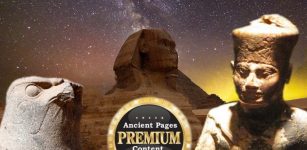 The Untold Story Of The Great Sphinx – One Of The Greatest – Part 1
Featured Stories | Aug 9, 2019
The Untold Story Of The Great Sphinx – One Of The Greatest – Part 1
Featured Stories | Aug 9, 2019 -
 Neolithic Watermelons Reveal Some Surprises About Our Ancestors
Archaeology | Aug 6, 2022
Neolithic Watermelons Reveal Some Surprises About Our Ancestors
Archaeology | Aug 6, 2022 -
 Two Knights, One Horse − How A Legendary Knights Templar Symbol Has Puzzled And Fascinated Since The Middle Ages
Featured Stories | Jun 3, 2024
Two Knights, One Horse − How A Legendary Knights Templar Symbol Has Puzzled And Fascinated Since The Middle Ages
Featured Stories | Jun 3, 2024 -
 6,000 Years Ago, Europe’s Oldest Cities Relied On Fertilizer And Plant Protein, Isotope – Analysis Shows
Archaeology | Dec 19, 2023
6,000 Years Ago, Europe’s Oldest Cities Relied On Fertilizer And Plant Protein, Isotope – Analysis Shows
Archaeology | Dec 19, 2023 -
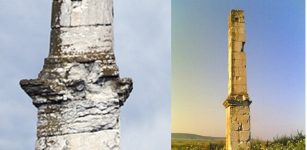 Archaeologists Will Excavate Unique Ancient Roman Obelisk Near Lesicheri, Bulgaria
Archaeology | Apr 8, 2016
Archaeologists Will Excavate Unique Ancient Roman Obelisk Near Lesicheri, Bulgaria
Archaeology | Apr 8, 2016 -
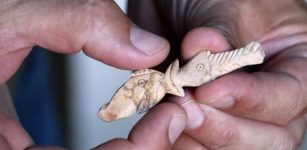 2500-Year-Old Objects Made From Goat Bones Discovered In Turkey’s City Of Aigai
Archaeology | Sep 17, 2020
2500-Year-Old Objects Made From Goat Bones Discovered In Turkey’s City Of Aigai
Archaeology | Sep 17, 2020 -
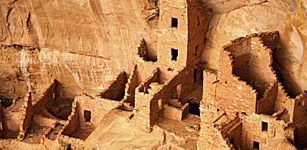 The ‘Anasazi’ Mystery: Sophisticated Civilization That Disappeared
Civilizations | Sep 20, 2015
The ‘Anasazi’ Mystery: Sophisticated Civilization That Disappeared
Civilizations | Sep 20, 2015 -
 Remarkable Neanderthal Flute Found In Divje Babe Cave Is The World’s Oldest Musical Instrument
Artifacts | Dec 11, 2023
Remarkable Neanderthal Flute Found In Divje Babe Cave Is The World’s Oldest Musical Instrument
Artifacts | Dec 11, 2023 -
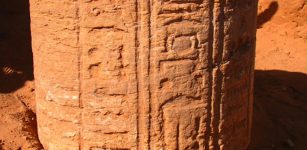 Abu Erteila’s Lost Temple And The Meroitic Empire: New Discoveries Shed Light On Nubian Civilization
Archaeology | Jan 14, 2016
Abu Erteila’s Lost Temple And The Meroitic Empire: New Discoveries Shed Light On Nubian Civilization
Archaeology | Jan 14, 2016 -
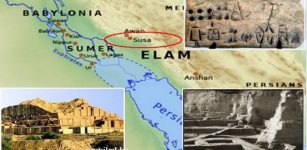 Riddle Of Two Undeciphered Elamite Scripts
Featured Stories | May 19, 2021
Riddle Of Two Undeciphered Elamite Scripts
Featured Stories | May 19, 2021 -
 Sumerian ‘Mask Of Warka’ From Uruk: Sculptured Face May Depict Goddess Inanna
Featured Stories | Sep 15, 2016
Sumerian ‘Mask Of Warka’ From Uruk: Sculptured Face May Depict Goddess Inanna
Featured Stories | Sep 15, 2016 -
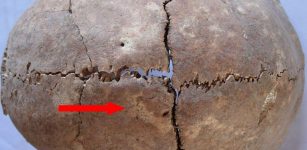 Physical Violence In Ancient Mesopotamia Much Less Common Than Ancient Texts Suggest – New Study
Archaeology | Mar 29, 2017
Physical Violence In Ancient Mesopotamia Much Less Common Than Ancient Texts Suggest – New Study
Archaeology | Mar 29, 2017 -
 Prehistoric Humans Adapted To Intense Climate Change – New Study
Archaeology | Apr 22, 2022
Prehistoric Humans Adapted To Intense Climate Change – New Study
Archaeology | Apr 22, 2022 -
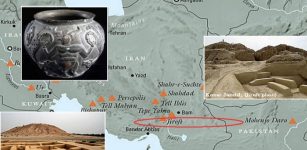 Archaeologists Survey Bronze Age Konar Sandal Site In Southeast Iran
Archaeology | Feb 17, 2021
Archaeologists Survey Bronze Age Konar Sandal Site In Southeast Iran
Archaeology | Feb 17, 2021 -
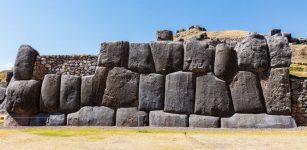 Cyclopean Fortress Of Sacsayhuamán – ‘Impossible’ Ancient Technology In Peru
Featured Stories | Apr 10, 2017
Cyclopean Fortress Of Sacsayhuamán – ‘Impossible’ Ancient Technology In Peru
Featured Stories | Apr 10, 2017 -
 Ranikot Fort: Gigantic Great Wall Of Pakistan Shows Greatness Of Indus Valley Civilization
Featured Stories | Mar 27, 2019
Ranikot Fort: Gigantic Great Wall Of Pakistan Shows Greatness Of Indus Valley Civilization
Featured Stories | Mar 27, 2019 -
 When Did Humans Start Using Roads And What Civilization Built The First Paved Roads?
Archaeology | Oct 26, 2022
When Did Humans Start Using Roads And What Civilization Built The First Paved Roads?
Archaeology | Oct 26, 2022 -
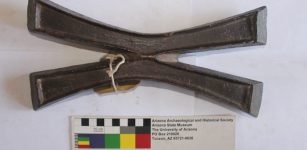 Copper Artifacts Reveal New Cultural Connections In Southern Africa
Archaeology | Mar 23, 2023
Copper Artifacts Reveal New Cultural Connections In Southern Africa
Archaeology | Mar 23, 2023 -
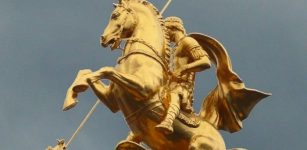 Saint George: Knight Warrior Who Refused To Denounce His Faith And Died A Martyrs Death
Featured Stories | Jun 3, 2019
Saint George: Knight Warrior Who Refused To Denounce His Faith And Died A Martyrs Death
Featured Stories | Jun 3, 2019 -
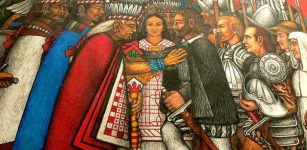 La Malinche – Greatest Traitor Or A Victim Of Hideous Circumstances?
Featured Stories | Jun 16, 2020
La Malinche – Greatest Traitor Or A Victim Of Hideous Circumstances?
Featured Stories | Jun 16, 2020





